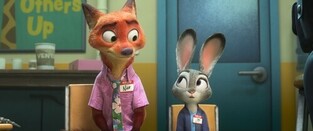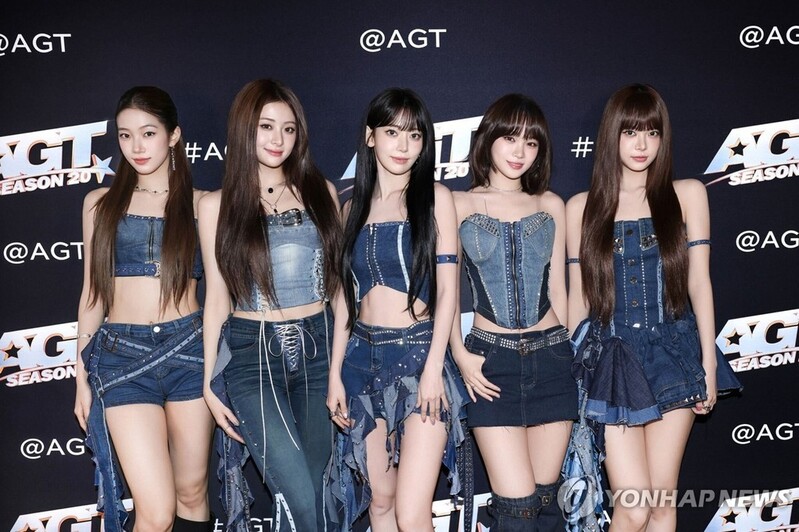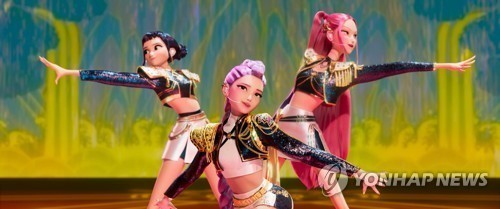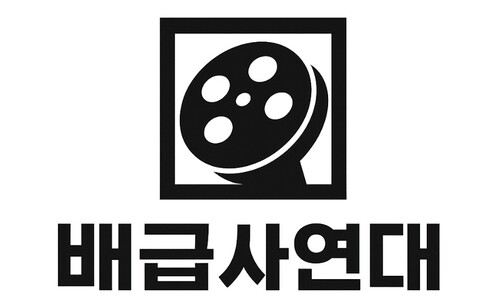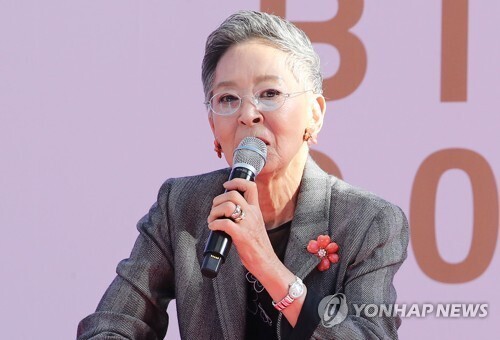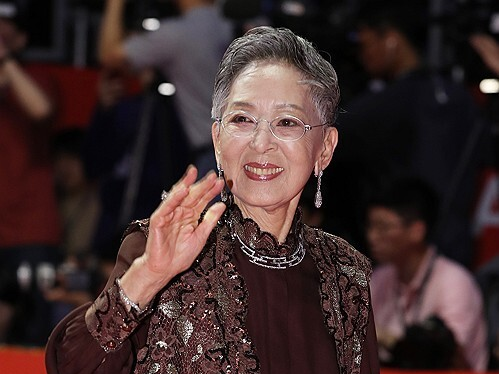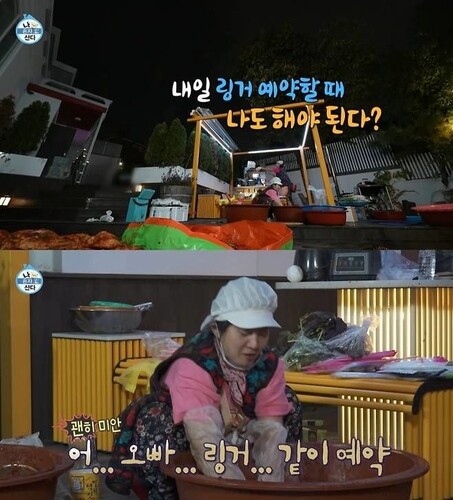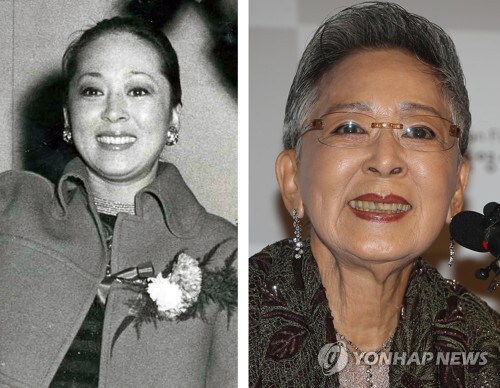 |
| ▲This photo shows visual exhibition of the Yongcehon Cave Visual exhibition. (Yonhap) |
 |
| ▲This photo shows, crystal water within the Yongcehon Cave Visual exhibition. (Yonhap) |
 |
| ▲This photo, shows, dinosaurs created using AR technology. (Yonhap) |
 |
| ▲This photo, shows Mammuthus Primigenius throughout the exhibition. (Yonhap) |
 |
| ▲This photo, shows plant exhibition throughout the center located in Daejeon. (Yonhap) |
 |
| ▲This photo shows, overall photo of National Heritage Center in Daejeon. (Yonhap) |
SEOUL January 14 (Yonhap) -- “3,2,1,” as the numbers decrease gradually, the magma which seem to boil underneath the surface of the earth appears in front of the audiences.
Magma which illuminated in red slowly disappeared back underneath the crust of the earth.
Later on, a cave filled with stalagmite, stalactite, and various speleothem which can only be witness within a cave was showcased.
Mesmerizing merit of the cave continued to expand as the audience were introduced with blue pond within the cave. Within the crystallized water of the lake, lied bones of various animals, porcelains used during ancestral memorial rites and more were showcased. These are some of the historical evidence that built the Jeju Island.
Throughout the total of 3 minutes and 30 seconds visitors were able to freely explore Yongcheon Cave located in Jeju island.
Exhibition located within the Natural Heritage Center in Daejeon was like a playground filled with lively Natural heritage.
The center located within Daejeon city is the one and only museum which exhibits natural heritage. Moreover the center successfully renovated its facility by placing VR, (virtual reality) and AR (Augmented Reality) aspects widely throughout the center.
Out of the six various contents the center developed, Visuals showcasing the Yongcheon Cave in Jeju Island is the one they have put the most amount of effort into creating.
Visitors will be able to explore the cave using five of the screens located within the exclusive segment of the exhibition. In order to re create the magnificent miracle created by fire and water the center have placed 10 of the projectors within the exhibition.
Manager Min Hong-gi of the National Research Institue of Cultural Heritage, who planned out the project addressed “We have worked very hard to recreate the cave which took centuries to form,” adding “From the creation process of the cave to underneath the pond located within the cave through the visual.”
Creating the realistic visual of the restricted area was not an easy task, therefore it took six months of hard work.
Director Kim Eun-hwa of Post Media Digital Museum Lab, who participated in the production of the project stated “Using three of the screen to project the visual to create realistic contents for visitors, however it was my first time working with five of the screens.”
Manager Lim Jong-deok of National Research Institute of Cultural Heritage addressed “I was granted access to the ‘Yongcheon Cave during the process of preparation for the enlistment of Unesco World Heritage site in 2006, and it feels unreal to see such accurate depiction of the site.”
360 visual sector located right next to the visual experience segment of Yoncheon Cave attracted a lot of visitors.
360 visual sector which showcases two of the nature reserves of Jeju Island, Hallasan Mountain, and Seongsan Mountain Ilchulbong Peak, provided its viewers with realistic depiction of being at the place, and visitors were offered with the look of the carter without having to climb up the mountain.
Officials of the center stated that the center of the exhibition is the best place to watch the video, because “The core of the exhibition is the screen located on the floor which allows visitors to truly experience the scene.”
Some of the realistic exhibitions provided by the center include children friendly materials as well.
For example, the exhibition showcases AR version of dinosaurs such as Huayangosaurus, Gigantoraptors and more within the segment where they showcase fossils, footprints and various geology exhibits.
When one takes a photo of the QR code visual of the dinosaurs appears on their phone. By adjusting the size of the dinosaurs with ones fingers, visitors will be able to take pictures with the various dinosaurs.
“Kids are the ones who are more adaptable to the various technology and features incorporated throughout the exhibition.” addressed director of the center while lightly smiling.
Segment which features Mammuthus Primigenius slightly lowered all of the screens located within the exhibition for better accessibility for the kids who visit the site.
While listening to the heart beat of the Mammuthus Primigenius, visitors will be able to witness the process of how internal organs, veins, furs and muscles of the creature are made. It is also interesting to compare the structural layout exhibited with the realistic depiction of the creature on the screen.
Manager Lim Jong-deok put an emphasis on the fact that K-heritage can be used as contents.
According to the research conducted by the teams’ researcher total of foreign visitors from over 22 of the various nations such as Island, Mexico, South Africa and more have visited the National Heritage Center in Daejeon since the beginning of August.
“Within one of the travel application often used by foreigners, National Heritage Center in Daejeon seems to appear all the time when searched for things to do in Daejeon. This showcases foreigner’s interest in South Korean Natural Heritage,” addressed manager Lim.
The manager addressed that the expected future growth of the National Heritage Center in Daejeon is limitless.
Artifacts and exhibited materials throughout the Natural Heritage Center in Daejeon showcases less than 1 percent of collected items within the archive.
Samples of taxidermy animals, are stored within the animal archive, whereas fossil samples are located within the geology archive. Out of them all some of the samples kept within the archive cannot be seen in any other exhibitions but in South Korea.
Manager Lim addressed “Natural Heritage withhold high academic value, to a point where it exceeds the reason to preserve, but it serves as an identity of who we are and South Korea,” adding “Since it withholds such grand potential, Natural Heritage will serve as very competitive content.”
(This article is translated from Korean to English by Joonha Yoo)
(END)
(C) Yonhap News Agency. All Rights Reserved










